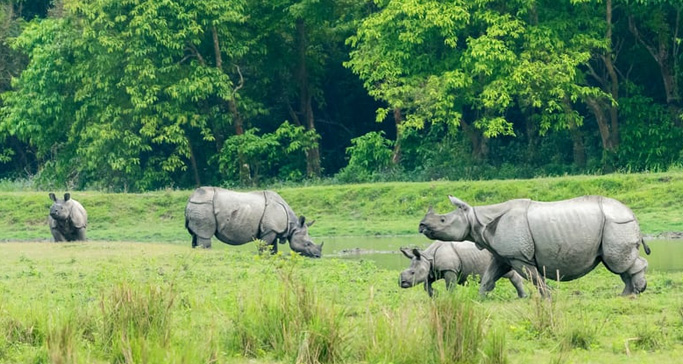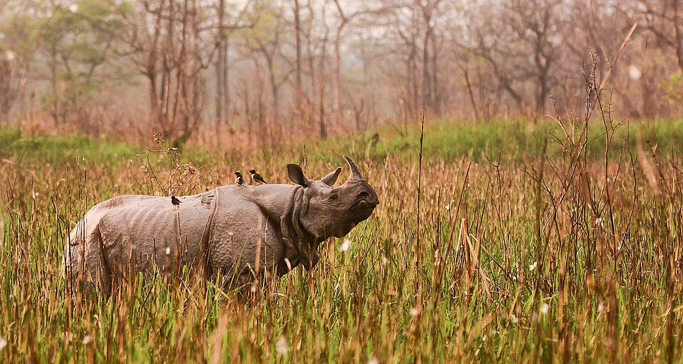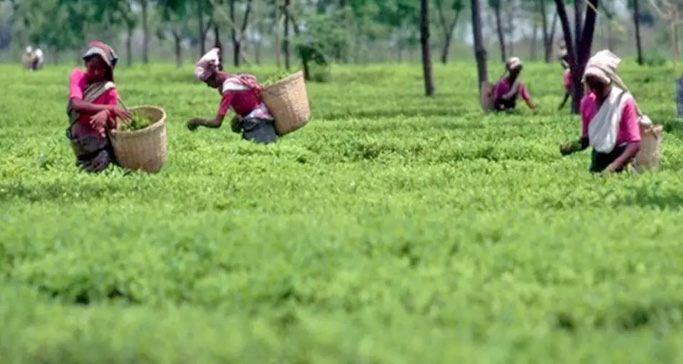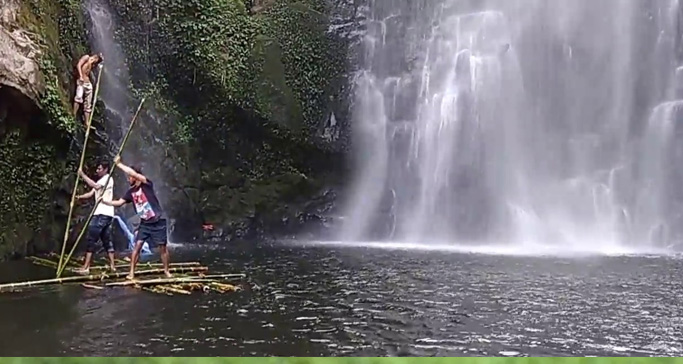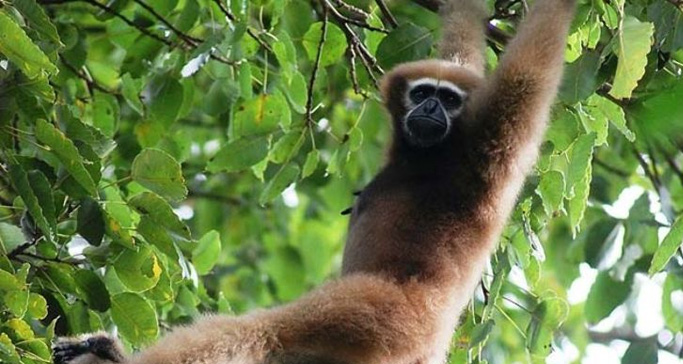History of Kaziranga National Park
Situated in the Golaghat and Nagaon regions of the state of Assam, Kaziranga National Park dates back to the early 20th century, when an American lady, Noble Mary Victoria Leiter Curzon, who was the wife of Lord Curzon (the Viceroy of India), visited Kaziranga in the year 1904. During that period, Kaziranga had been far-acclaimed for its immense population of rhinoceroses, but during her excursion in the region, she failed to see any rhinoceros in the forest; only foot imprints were observed. It was rumored that Balaram Hazarika, the well-known Assamese animal tracker, informed Baroness Curzon about the pressing requirement for wildlife conservation. She then requested that her husband take action for the conservation of rhinoceroses, which her husband did on November 4, 1904, when he proposed creating a reserve in Kaziranga. Later on, formal records of that proposal for the formation of the Kaziranga Reserve Forest were dated in September 1905. Thus, on June 1, 1905, the Kaziranga Proposed Reserve Forest was created with an area of 232 km² (90 sq mi).
Fauna in Kaziranga National Park
Kaziranga is immensely famous for being home to the world's largest population of One-Horned Rhinoceros (1855), Wild Water Buffalo (1666), and Eastern Swamp Deer (468). There is a total of 35 mammalian species, out of which 15 are threatened. Other species include elephants, gaur, sambar, Indian muntjac, wild boar, Indian gray mongoose, small Indian mongoose, large Indian civet, Bengal fox, golden jackal, sloth bear. The 'big five' of Kaziranga is the collective name given to the group of one-horned rhino, wild water buffalo, swamp deer, Asian elephant, and royal Bengal tiger. Kaziranga was declared a tiger reserve in 2006 and has the highest density of tigers in the world: 1 per 5 sq km. The total population of wild cats is 118, and it is one of the few breeding grounds for the same, outside Africa. Rivers of Kaziranga are also home to the endangered Ganges Dolphin. The bird kingdom includes names like the lesser white-fronted goose, ferruginous duck, Baer's Pochard duck and lesser adjutant, greater adjutant, black-necked stork, Asian openbill stork, Blyth's Kingfisher, white-bellied heron, Dalmatian pelican, spot-billed pelican, Nordmann's Greenshank, and black-bellied tern. Three species of vulture—Indian vulture, slender-billed vulture, and Indian white-rumped vulture—are also found.
Wildlife Safari at the Kaziranga National Park
A visit to Kaziranga National Park is likely the highlight of almost everyone's trip to Kaziranga and has a lot to offer for everyone. Book a safari jeep or a modern SUV and wander around the area. Kaziranga National Park is a protected area for some of the most endangered species in the world, which includes animals, mammals, and birds alike. The impressive list of animals you can spot here includes the Indian Rhinoceros, Indian Elephant, Wild Buffalo, Wild Boar, Sambar, Macaque, Sloth Bear, Indian Leopard, Black Bear, and a variety of birds. A lot of migratory birds are also found here and make it a great spot for bird watching; an absolute treat for bird watchers and nature enthusiasts. The Kaziranga National Park is also home to a Tiger reserve that houses the critically endangered Great Bengal Tiger. You can also take Elephant rides in the Park.
Attractions of Kaziranga National Park
Kaziranga National Park is one of the major wildlife tourist attractions in India. Thousands of travelers from different parts of the country and world come here every year to explore the diverse wildlife and scout the loveliness of the natural realm. The ideal geography with a river and its varied plains winds through its entire length; Kaziranga promises an adventure that you will never forget. The tourism of Kaziranga is not just about spotting one of the many one-horned rhinoceroses or tigers but also to watch the three giant herbivores that dwell in the park: The Asiatic Elephant, The Swamp Deer, and the Asiatic Water Buffaloes. The park has also been outlined as an important bird zone by BirdLife International in order to promote the conservation of endangered species.
One of the many attractions in the Kaziranga National Park is exploring the hidden mystery of the thick jungle on elephants that are controlled by expert Mahouts. It is a great treat for travelers to move in the open grounds on these majestic creatures. The other available option to see the national park is on scheduled jeep safaris. These can be booked in advance from the online website link provided.
Best Time To Visit Kaziranga National Park
TThe best time to visit Kaziranga is anywhere from November to April. Since the whole of Assam gets significant rainfall in the monsoon and the pre-monsoon time, the Kaziranga National Park floods in the months of June, July, and August. No wonder the rhinos love bathing and staying in water during these months. The water starts retreating in September and October, and the spot is accessible to tourism from November again.
How to Reach Kaziranga National Park
Via Airway: There are two closest airports to the park: Guwahati International Airport and Jorhat Airport, located at a distance of 217 km and 97 km respectively from the park. There are well-maintained connecting roads from both the airports to the park. The Lokpriya Gopinath Bordoloi International Airport, located in Guwahati, is the best option to arrive via air from any corner of India or abroad. At the airport, hire a taxi or cab to visit the park directly, or you can go to the Bus stand at Paltan Bazaar, which is around 23 km from the airport, and then take the state-owned bus service or private bus to reach the park, which will be cheaper than the direct taxi or cab.
Via Road The main gate of the Kaziranga Park is situated in a small Kohora town that lies on National Highway NH 37, due to which Kohora is connected to all the major cities of Assam such as Guwahati, Tezpur, Jorhat, Nagaon, Golaghat, Dimapur, Tinsukia, Sivasagar, etc., by state transport buses or privately run buses and minibuses. Local bus services also run, connecting Kohora to other nearby towns. The closest major cities like Guwahati and Jorhat connect with other parts of the country by air, rail, and road. You can visit these cities and then hire a taxi/cab or take public transports to reach the park conveniently.
Via Train The closest railway station to Kaziranga Park is Furkating, which is located at a distance of 75 km from the park. The station is well-connected by many trains to major railway stations like Guwahati, Kolkata, New Delhi, etc. However, travelers can also use the other closest railway stations which are the Guwahati railway station and Jorhat railway station, located at a distance of 240 km and 90 km respectively. Both these railway stations are major railway stations of the Northeast Railways. From the stations, you can further use the roadways to reach the park by hiring a taxi, cab, or bus services.

